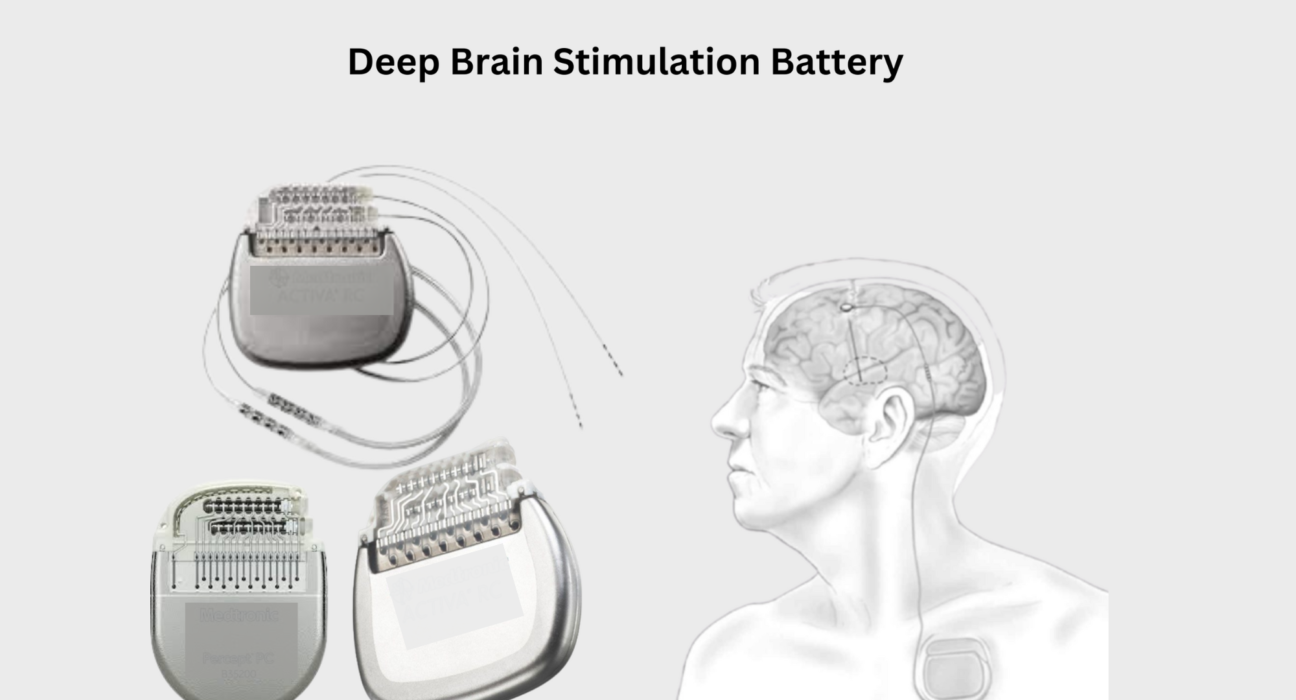Deep brain stimulation (or DBS) is a commonly performed brain surgery that makes use of an implantable pulse generator (IPG), which is also referred to as a neurostimulator, waveform generator, or power source. The IPG controls the flow of current to highly specific brain sections via an attachment to an implantable DBS lead, which is also known as electrode. Each DBS electrode has multiple contacts, and hence numerous, possible parameter configurations.
Battery Drain
There are numerous factors that could lead to battery drain. Some of these factors include battery usage, neurostimulator manufacturing tolerances, tissue impedance, battery chemistry, usage patterns, interpolation error, and self-discharge. Unfortunately, these factors cannot be considered by any single, available battery estimation technique.
The Battery Life And What Happens When It Dies
DBS makes use of either rechargeable or non-rechargeable batteries that must be replaced by surgery when depleted. Non-rechargeable batteries last anywhere between 2 and 5 years, while rechargeable batteries can last from 9-25 years. Rechargeable batteries need to be recharged for 1-2 hours every week; that said, some individuals recharge them every day. Total exhaustion of rechargeable batteries may lead to premature battery failure. The recharging frequency is very individual, and it all depends on the amount of current used. Some diseases like dystonia require heavy usage of currents and some require less.
Depending on your disease, stopping of the battery can have different impact on your quality of life. Prof. Paresh Doshi, in a recent interview, stated that for patients of advanced Parkinson’s disease risk and cost life and death situation. In the recent meeting on neuromodulation, his team reported on two patients who had catastrophic (near-death) situations on two patients who ended up having their non-rechargeable batteries depleted. They suffered from Parkinson’s hyperpyrexia syndrome. They could only be saved because of timely intervention and replacement of battery. Similarly, in patients who have undergone DBS for depression or OCD, there can severe relapse of the symptoms on exhaustion of the batteries.
Keeping A Track Of The Battery Life
Some specific DBS devices come equipped with a patient programmer, which is technologically enhanced so that you can manage your therapy with utmost ease and convenience. One such feature is the Smart Battery Technology. With this technology, you can successfully check how much battery life is left on the device at any point in time so that you as well as your doctor will know when to schedule an appointment for the replacement of the neurostimulator.
Other patient programmers give the exact battery charge and depending on the charge level, your medical team can give you an approximate idea about the remaining battery life.
Are Rechargeable Batteries A Better Alternative?
The rechargeable neurostimulator was developed in the year 2008 and outperformed the neurostimulator that runs on fixed-life batteries in several, in diverse ways: (1) Individuals who have undergone DBS require fewer IPG-replacement surgeries because of battery depletion, thereby substantially reducing deep-brain-stimulation-surgery—related health risks. (2) Rechargeable batteries are less likely to induce unexpected clinical changes, such as worsening of symptoms in Parkinson’s disease, whereas the current of fixed-life batteries gets eventually irregular while they are gradually exhausted. (3) Rechargeable batteries are smaller in size. When it comes to the frequency as well as the duration of the IPG-battery recharging procedure, the dependence is on the power of the DBS that is needed to manage symptoms of Parkinson’s disease in a patient. That said, patients must check the battery status and must regularly recharge the battery through a handheld device. The recharging process, though not at all difficult to perform in younger individuals, can be quite challenging for patients with Parkinson’s disease because most of them are elderly with several levels of motor as well as cognitive deficits. Another consideration in the selection of rechargeable vs chargeable pacemakers is the lifestyle of the patient. If the patient is a frequent traveller, the burden of charging is too high and hampers his schedules and mobility and he may opt for a non-rechargeable battery.
Another factor to consider is the replacement of the non-rechargeable battery, which is not very difficult in advance. It is only a one-day procedure under local anaesthesia and can be performed even on elderly patients may not be fit for any kind of anaesthesia.
What Happens In Case Of Battery Failure
Whether you need to be worried depends on the symptoms that you are experiencing. If you have essential tremor, your tremor will fail to be controlled. While this can be annoying, it is not usually considered as an emergency; that said, you must contact your neurosurgeon to have the neurostimulator replaced at the earliest. If you have Parkinson’s disease, the symptoms of tremor, stiffness, and slowness may come back with resounding force over just a couple of days, which can be a cause for worry because the patient may not be able to move. Most patients who have undergone DBS consume fewer medications; hence, the number of medicines you are taking will not be of much help. In such a scenario, you must contact your neurosurgeon as soon as possible. They may ask you to enter an emergency room, and a prompt battery replacement will be carried out. If you have dystonia, your symptoms may resurface over the course of days and weeks. In this case too, you need to contact your neurosurgeon. Following up with your team of doctors for regular monitoring of the neurostimulator’s battery will drastically reduce the chances of unexpected battery failure.
To Sum It Up
One of the most significant components of the neurostimulator is the battery, which is available in both rechargeable and non-rechargeable forms. The lifespan of a non-rechargeable battery is between 2 and 5 years, whereas the lifespan of a rechargeable battery is around 9 years. Symptoms may worsen if the battery fails unexpectedly. Hence, you must speak to your neurosurgeon at the earliest to rectify the problem.
References:
- https://www.ncbi.nlm.nih.gov/pmc/articles/PMC3594176/
- https://www.ncbi.nlm.nih.gov/pmc/articles/PMC7104899/
- https://www.medtronic.com/in-en/patients/treatments-therapies/deep-brain-stimulation-parkinsons-disease/living-with-dbs/how-to-use-your-patient-programmer.html
- https://pubmed.ncbi.nlm.nih.gov/30133071/
- https://www.frontiersin.org/articles/10.3389/fneur.2021.668322/full
- https://www.uofmhealth.org/conditions-treatments/brain-neurological-conditions/frequently-asked-questions-deep-brain-stimulation


Leave feedback about this